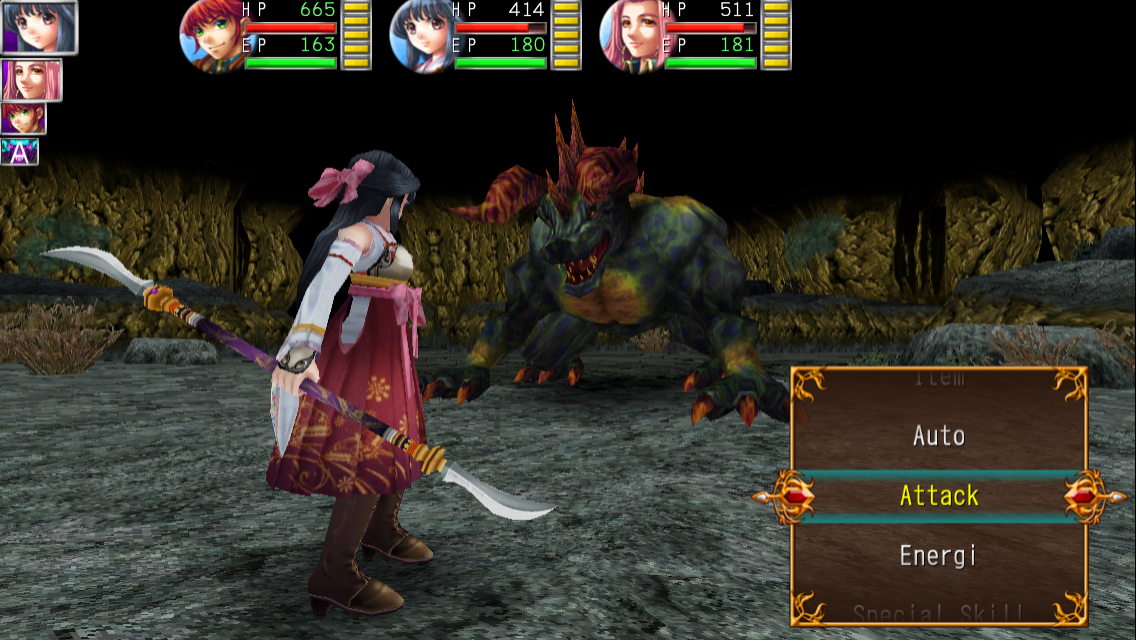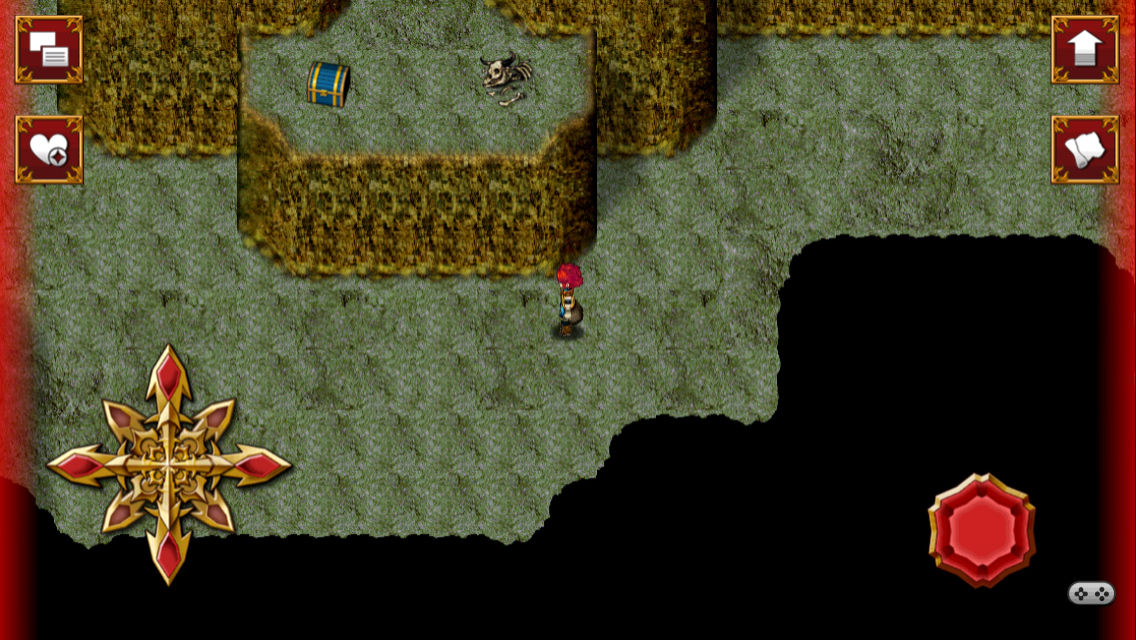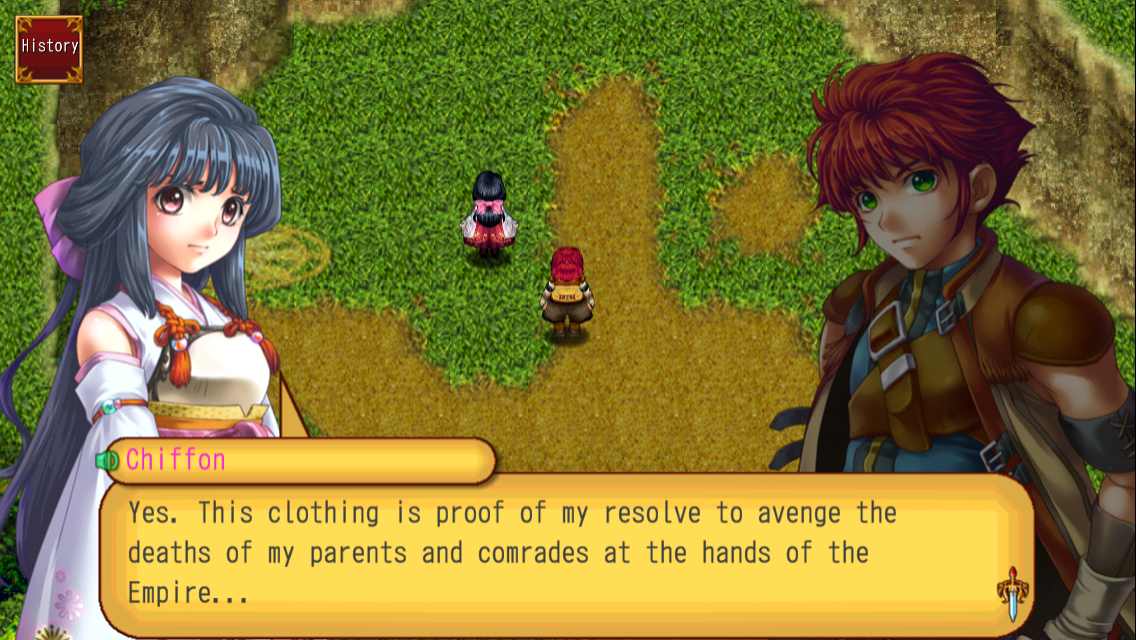 The Alphadia series represents something of an oddity in prolific RPG publisher Kemco’s line-up. For all of the iOS games they put out, roughly one per month for the last few years, there’s only one sequel in the bunch that isn’t part of the Alphadia series. Alphadia ($3.99), on the other hand, has three sequels, though the links between them are becoming increasingly tenuous as time goes on. Of course, with at least two more Asdivine games released in Japan, that’s going to change soon enough, but it’s still quite interesting. Are these games particularly popular, or does developer EXE-Create just like the trappings of Alphadia‘s mythos? That’s a question I can’t answer, but it’s clear that the developer and publisher both give the Alphadia games a bit of special treatment. Alphadia Genesis ($9.99) was the game that debuted EXE-Create’s new 3D combat engine, used in a few other titles since. Now that title is getting a follow-up, Alphadia Genesis 2 ($9.99).
The Alphadia series represents something of an oddity in prolific RPG publisher Kemco’s line-up. For all of the iOS games they put out, roughly one per month for the last few years, there’s only one sequel in the bunch that isn’t part of the Alphadia series. Alphadia ($3.99), on the other hand, has three sequels, though the links between them are becoming increasingly tenuous as time goes on. Of course, with at least two more Asdivine games released in Japan, that’s going to change soon enough, but it’s still quite interesting. Are these games particularly popular, or does developer EXE-Create just like the trappings of Alphadia‘s mythos? That’s a question I can’t answer, but it’s clear that the developer and publisher both give the Alphadia games a bit of special treatment. Alphadia Genesis ($9.99) was the game that debuted EXE-Create’s new 3D combat engine, used in a few other titles since. Now that title is getting a follow-up, Alphadia Genesis 2 ($9.99).
What’s intriguing to me is that in spite of this being a sequel in title, it actually changes things up quite a bit. Yes, the story still revolves around Energi, and I doubt it’s a spoiler to tell you that Enah shows up at some point, but the combat system is completely new, and the character development works a little differently, too. Naturally, you’re flung into a completely new setting with an almost entirely new cast, and while it eventually sort of hooks up with the other Alphadia games, the bulk of the story might as well be its own thing. The hero this time around is Dion, a young man who comes from a village of people in hiding from the Empire. There are two types of Energi in the world, white and black, and those unfortunate enough to be born of the black Energi are doomed to become monsters with no warning. To keep the rest of the people safe, the Empire hunts down and kills all those who are infected with black Energi. Forced into hiding, it’s just a matter of time before the Empire stumbles upon our hero’s village, forcing him into action.

So yes, it’s magic racism time again at the JRPG theater. Alphadia Genesis 2 handles the topic with a bit more nuance than I’d expected, but not much more than that. Fortunately, EXE-Create’s usual strength with character work is alive and well here. Like many Japanese heroes, Dion is completely ignorant to the rather obvious affections of the heroine, Chiffon, but other than that, he’s a reasonably complex character for a game of this scale. The rest of the main cast isn’t quite as strong, with Chiffon basically taking the role of the fawning love interest, Elize representing the always-awkward yet somehow mandatory role of the lecherous adult, and Faulkner being a proper knight in shining armor. I was more impressed with the antagonists this time around, with the Emperor, his father, and his son all proving to have motivations well beyond the sort of mustache-twirling evil that Kemco RPGs like to fall back on so often.
I’m also impressed at the pacing of the game’s story. Usually in Kemco games, it’s a contrived dash to get everyone in the party as soon as possible, something that usually makes the story feel like it’s moving to the beat of the gameplay’s requirements rather than its own rhythm. Alphadia Genesis 2 is confident enough to take things slowly, with hours passing before you even have a third member, let alone the full party. Giving Dion and Chiffon some time to develop their dynamic before adding the others into the mix helps make their closeness to one another feel more plausible. I enjoy the game’s nuanced approach to morality, as well. There are a lot of people trying to do the right thing at the same time that end up at odds with each other, and almost all of them feel justified in their actions. Even the hero isn’t innocent of carrying out actions according to his heart that end up causing a lot of harm. This aspect of the game helps keep you interested in the boilerplate gameplay that surrounds the story, and the plot also has a couple of solid twists that ensure the game ends on a high note.

The battle system tries something different, and I have mixed feelings about the results. The game uses the usual turn-based system where you choose attacks and magic from a menu, with the order of participants set based on their speed. The twist comes with the Boost Gauge. Each character has their own five-point Boost Gauge, filled to top at the beginning of each battle. After you select a command, the game will ask you how much of your Boost Gauge you’d like to spend on the attack. The more Boost you put into it, the more effective the action will be. Each character will recover one point of Boost per turn, and defending instantly recovers one point. It’s not too far removed from the similar systems found in games like Chrono Cross or Xenogears in this respect. Characters also have their own personal special abilities that allow you to pull off some pretty powerful actions at the cost of temporarily reducing the cap of your Boost Gauge.
It’s not a bad idea on paper, but in practice, it has its drawbacks. If enemies are strong enough to withstand your initial onslaught, picking off the stragglers can sometimes be a slow process. You can either fire off incredibly weak one-point attacks, or block for a few turns to get the gauge back up. Either way, it really drags the pace of regular battles down. There are ways to get around it, like making use of Chiffon’s Spur special to instantly restore another character’s Boost. Even that requires a bit of stop and start, however, to recover her Boost Gauge after a couple of uses of Spur breaks it. I don’t mind this kind of pacing in boss battles, but whenever a random battle contains more enemies than you have party members, it’s very annoying. I guess the good side of that is that if a random battle has fewer enemies than you have characters, it’s likely going to be over in one turn. At the very least, I appreciate the attempt to try something different here. The support system found in the original Alphadia Genesis, absent here, didn’t do much for me.

The character building options aren’t so creative. Basically, you can equip up to two accessories on each character. Certain accessories contain the properties of a job class, and equipping them to a character allows them to permanently learn abilities from that job as they gain experience. It’s a time-honored method, but it never really takes off here thanks to the scant number of jobs. Moreover, there’s nothing stopping you from grinding out every job for everyone, though that’s probably not feasible within the course of playing through the game unless you really go out of your way for it. That’s not even considering the possibility that you might want to equip a non-job type of accessory for whatever reason. I suppose that’s kind of an interesting way to go about it, though. You have to choose between something that provides immediate utility over something that will make your character stronger in the long term. In practice, a fully Boosted fight command is going to do just about as much damage as anything you could throw out magic-wise, so you’re probably good to just slap a healer accessory onto each character and use the other slot as you like.
Alphadia Genesis 2, like its predecessor, offers multiple difficulty settings. There are actually some thoughtful changes between the three settings as opposed to the simple stat trickery most RPGs pass off as difficulty levels. On easy, enemies are weaker, of course, but you’ll also benefit from teleport points that fully heal your party and a helpful little light that guides your way through dungeons. On normal, the teleport points lose their healing capabilities and the enemies are a bit tougher, but you still have the guiding light in the dungeons. Hard mode beefs up the monsters and takes away all the niceties of the lower difficulty levels, making it well-suited to veteran players. The dungeons aren’t particularly tricky to navigate or anything, so I’m not sure how useful that light is going to be for most people, but it’s a kind consideration, I think.

Some of the dungeons are rather big relative to what we usually see in Kemco’s games, though. They’re fun to navigate, don’t force much backtracking on you, and offer up the occasional secret to uncover with a useful treasure as a reward. There are damage-inducing trap floors, something that has driven me to rage in Kemco stablemate Magitec’s games, but they’re used sparingly here for the most part and don’t feel nearly as pointless. I would have liked a few more puzzles to break up the routine, but I know that’s not really an EXE-Create specialty. I’m reasonably satisfied just having dungeons that challenge your resource management without feeling like dreadful drags. If there’s one area where EXE-Create could stand to improve in the future, though, it’s in the dungeon designs. They’ve raised up to expectations before in other areas, and I have confidence they can do the same in this aspect one day.
The presentation isn’t terribly different from this developer’s previous 3D titles. The enemies still have a few awkward animations, but the stockpile of assets is clearly growing as there’s a lot less palette-swap chicanery in this title than the first one. Unfortunately, the non-3D portions of the game, which is to say everything outside of the battle scenes, still suffer from choppy scrolling. I look forward to the day where I review a Kemco-published game that doesn’t merit that mention. The soundtrack is rather small and pretty unimpressive all-around. The composer at EXE-Create has a distinctive sound, and they do nothing to break away from it here. As much as I enjoyed it in the first few games, the butt-rock battle music is starting to wear a bit thin.

What is pretty different is the game’s user interface. It’s more carefully designed for touch devices, but I’m not sure that I like it better than the usual layout. There are lots of menu wheels to spin and the party menu, while visually pleasing in a minimalistic sort of way, makes it hard to find the information you want when you want it. Sub-menus are completely separated from one another, making you have to go completely in and out of various branches to get your party in order. It’s a clever design, and it looks good, but it’s a bit worse to actually use. Hilariously, the hardest thing to find was the game’s IAP shop. Like other Kemco games, you can earn points in-game and exchange them at a special shop for cheat items. If you like, you can also buy those points via IAP. As in most of EXE-Create’s games for Kemco, the point items feel completely extraneous, and they’ve gone and buried the shop in the tactics sub-menu, of all places. I get the feeling the developers like that shop about as much as most players do.
While I have a few little quibbles about balance issues and the odd battle pacing, Alphadia Genesis 2 is a fairly solid JRPG with an interesting story, a decent cast of characters, and no major failings in any important categories. If all you’re looking for is an enjoyable, traditional JRPG romp, it won’t let you down. That familiarity could also be the game’s biggest negative point, depending on your own feelings towards the genre. It has a couple of interesting ideas between its story and the combat system, but by and large, this is nothing more or less than a meat-and-potatoes RPG in the classic style. I leave it to the individual as to whether or not that will satisfy you, but I enjoyed it quite a bit.